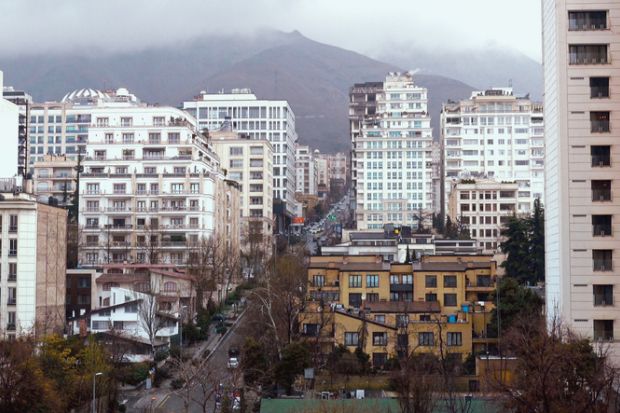Iranian lecturers worry that a reported government plan to hire thousands of lecturers could be a thinly veiled precursor to a large-scale purge of academia.
A professor at Sharif University of Technology said Tehran intended to hire 15,000 new lecturers into the country’s universities, citing a leaked document.
The news comes after a year of tumult in Iranian academia. Many scholars critical of the regime or supportive of student protesters had already been weeded out of Iranian universities following the countrywide uprisings after the death of a young Iranian woman, Mahsa Amini, in custody.
It appears that authorities in the country are now gearing up for more expected protests in September – the beginning of the academic year and the one-year anniversary of Ms Amini’s death – with rumours that universities might start the semester online to pre-empt any demonstrations.
As disturbing as that prospect is, scholars expressed more concern about information indicating that the government could be preparing for a massive clear-out of existing faculty.
Encieh Erfani, who last autumn resigned from her post as assistant professor of physics at Zanjan’s Institute for Advanced Studies in Basic Sciences in solidarity with protesters, said a purge would be necessary if the government wished to hire thousands of scholars.
“The regime has no budget to hire 15,000 faculty members, so the goal is to fire the ones that are not supporting the system,” she said.
Dr Erfani noted that 15,000 lecturers would constitute almost 17 per cent of the 86,000 faculty members currently working in Iran.
The country’s recent history is not reassuring. In 1980, a year after the Iranian revolution, at the direct order of its then-ruler Ayatollah Khomeini, universities were closed for three years. As result, more than 7,000 faculty members – at the time, half of the professors in Iran – were fired, retired by force or left the country, and more than 20,000 students lost their right to education, she noted.
If the regime plans to cut many faculty members to accommodate new hires, “this will be a disaster for the higher education system”, Dr Erfani said.
Another Iranian scholar, who wished to remain anonymous, said bending rules to bring in thousands of new, regime-loyalist faculty “seems like something” Tehran would do.
“This reminds me of [the] 3,000 illegal scholarships during the Ahmadinejad presidency,” the scholar said, referring to a time when many students reportedly got PhD scholarships to do studies abroad – a precursor to later faculty positions – without passing an exam. “The next government revealed it but could do little about it.”
The researcher noted that while Iran’s minister of science had stopped short of confirming the leaked plan, he had not denied it, saying only that any hiring of new faculty should be done in accordance with legal procedures.
The scholar was sceptical that the government would find enough degree holders to replace the desired number of faculty members.
“I…don’t know how the government is going to do that – first in terms of money, and then how to find so many supportive people with [a] PhD to hire,” he said.
Religious scholars could be one means of filling open positions, he suggested.
“Perhaps they are going to hire clergymen, too…that had always been a long-term plan to open the doors of universities to clergymen.”




